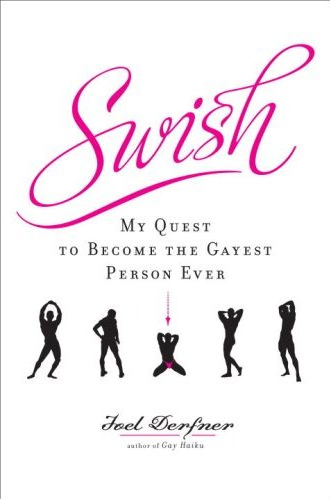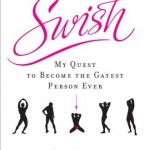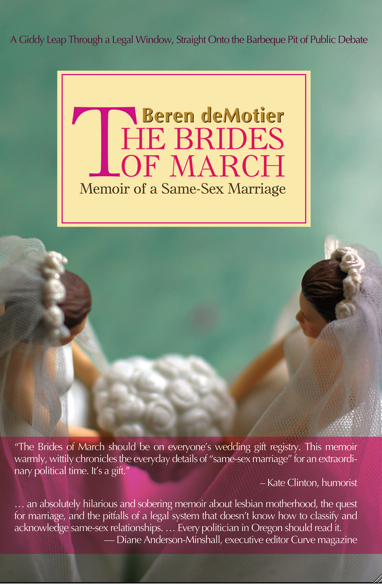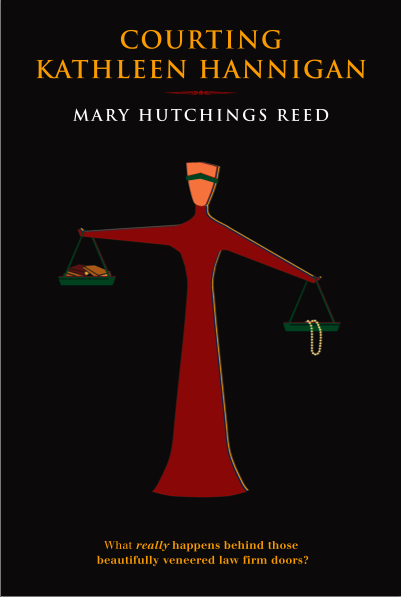Before I launch into today’s disquisition on the ins and outs of showing, rather than telling, an announcement for those of you within driving distance of San Francisco: author, blogger, and FAAB (Friend of Author! Author! Blog) Mark Pritchard will be giving a reading in the City by the Bay this coming Saturday, May 17. For those of you not already familiar with Mark’s Too Beautiful blog might want to run, not walk to his fascinating What Are You Working On? series of author interviews.
Mark will be reading in the Progressive Reading Series at 7:00 pm on Saturday, May 17 at the Makeout Room, 3225 22nd Street at Mission, San Francisco.
And hoo boy, is he ever going to be joined by an impressive line-up of writers who could tell you a thing or two about showing, not telling! Lookee:
Josh Bearman and Starlee Kine (This American Life)
Pam Houston (“Sight Hound,” “Cowboys Are My Weakness”)
Adam Mansbach (“End of the Jews,” “Angry Black White Boy”)
Mark Pritchard
Mary Roach (“Stiff,” “Spook,” “Bonk”)
David West
This evening benefits the campaign against California’s Proposition 98, and advance tickets are highly recommended.
Okay, back to business.
Last time, I argued that in both fiction and nonfiction, readers regard summarized information as less important — to the story, to the argument — than material presented in a more fleshed-out form. This is a pretty darned good reason to follow the old show, don’t tell rule in and of itself: vividly-rendered scenes, striking character development, and detailed proof are simply more memorable than quickly-sketched outlines.
Yes, you did read that correctly: I said character development. For some reason that I have never been able to understand fully, the show, don’t tell axiom and character development are seldom mentioned with in the same breath in writerly circles, or even in the same weekend seminar or composition class.
As an editor, I find this a touch odd, as in the average manuscript — come closer, so I may whisper a trade secret to you — a tendency to draw conclusions for the reader almost invariably detracts from the efficacy of character development. Heck, some professional readers would even say that telling is the natural enemy of character development.
Why? Well, several reasons, most of which dance around the issue of how people tend to read.
To understand the first reason, we need go no farther than to the opening paragraph of this post: as anyone who has ever tried to slog through a poorly-written textbook can tell you, readers are less likely to remember (read: think that they will need to remember) information presented as generalities than the same collection of facts enlivened by specifics.
Which means, in practice, that conclusions about a character tend to slip out of a reader’s mind. As you may recall from yesterday, a passage like:
Eustace was an inveterate coward, a hider behind matronly hips that had for many years been too narrow to provide truly effective concealment for his ever-increasing girth. He didn’t particularly care whose hips they were — Mom’s, his sister Rose’s, his girlfriend or wife du jour’s – so long as they were balanced between him and the frightening world.
may be amusing in the moment, but it’s unlikely to stick in the reader’s mind as anything but a pretty passage of prose. If Eustace were an important character, even a single scene that SHOWED him acting cowardly would establish this trait far more effectively than even four or five repetitions of simple assertions about it scattered throughout the text.
Why do I bring up the possibility of this much repetition? Because, alas, many aspiring writers confuse tellin} the reader what a character is like with character development.
But when the pros talk about character development, they don’t usually have broad summary statements in mind. (Yes, even if they don’t say so explicitly.) They’re generally thinking of the many, many different tiny, revealing, and delightful details a writer could use to show what a particular character is like — and how s/he grows and changes throughout the book.
This ideal should not be confused, of course, with the kind of narrative that showers the reader with a million and twelve tiny facts, each presented as equally important. That tends not to go over so well.
Especially — brace yourselves; here comes Millicent — in those all-important first few pages that determine whether a submission gets rejected out of hand or given a fuller reading. Writers seem particularly fond of overloading the reader with physical and environmental descriptions in early chapters, as if everything that could possibly be seen needs to appear in the reader’s first glimpse of the protagonist or can never be mentioned at all.
Let’s take a gander at how the average submission might introduce poor Eustace:
Whey-faced Eustace went more than usually pale, his already-pasty cheeks draining of what little blood had managed to work its way up from its customary pooling place farther south, in the region of the stomach his mother kept so well supplied and the acid-washed jeans in which she still ironed a lovingly uncool razor-sharp crease every morning. Certainly, his blood did not seem to be in the habit of regularly visiting his brain, where it might conceivably have provided some much-needed R&R to the synapses and corpuscles that would have been in charge of critical analysis in a better-lubricated mind. His reddish-blond hair, never too good a scalp covering even in its heyday, now seemed to be fleeing his astonishingly full eyebrows with all possible dispatch. If his chest hair had any aspirations to assert itself, it was still working up the nerve under his carefully-starched button-down shirts — fourteen of them hung lankly in his cedar-stuffed closet, awaiting Mom’s magical touch with spray starch. His shoes, shined to within an inch of their lives — a good trick, with sneakers — all pointed their toes toward the closet door, the front hallway, and the world beyond, as if they felt that Eustace’s timidity were the only thing keeping them from the life of adventure they deserved.
All RIGHT, already: we get the picture. We also would have gotten the picture with half as many details.
Don’t buy it? Okay, here’s a pop quiz: cover the last example and try to list all of Eustace’s physical and sartorial traits in the order they appeared. Difficult, isn’t it?
That’s not the fault of any of the individual details, incidentally. The problem here is one of emphasis — and presentation.
Too many facts in a row simply become a list, in the reader’s mind. By a couple of lines in, all of that information starts to blur together, encouraging — dare I say it? — skimming.
Faced with this kind of reaction (as well as the dread prospect of agents’ turning pale at manuscripts much over 100,000 words), many writers rush to the opposite extreme, cutting details to the proverbial bone in an effort to streamline their work.
Which isn’t necessarily going to improve the manuscript, if emphasis is the problem. What will solve it is removing non-revealing details that only serve to distract from what the writer wants the reader to take from the scene.
That last set of observations raised some hackles out there, didn’t it? “But Anne,” I hear some of the behackled exclaim, “I hate to quibble, but first you tell us not to summarize essential character information, but instead to reveal character through a plethora of details — and then you turn around insist that too many details are the kiss of death. How will I know when my manuscript has reached the right balance between detail and summary?”
Great question, raised hacklers, and one that richly deserves an answer. Unfortunately (and contrary to some writing guides out there promoting the {show, don’t tell} path of righteousness}, there isn’t a magic formula that can be applied to every manuscript.
Time to call in the first readers, in other words.
That advice didn’t sooth all that many savage breasts, did it? “Okay, Anne,” my former questioners continue through gritted teeth, “I can try to accept that. But when I gave my manuscript to my mother/sister/best friend/husband/some total stranger I happened to meet at the café down the street, I noticed that s/he didn’t seem to have all that great a memory for the details you told me to use to reveal character. Why, it says very plainly in Ch. 2 that Dorothea is my protagonist’s lover’s cousin’s au pair, but without exception, all of my feedback-givers wrote, “Who’s this?” in the margin when Dorothea appeared again in Ch. 27.”
Oh, honeys, I hope you’re sitting down, because I have some potentially disturbing news for you: most people don’t actually read every single syllable of a book, much less absorb the impact of every single sentence.
Or, to put it another way, just because a writer mentions something on a page doesn’t mean that any given reader — even a very good one who takes notes as she reads, like yours truly — will necessarily remember it all the way through the reading process.
I hope that didn’t make anyone out there faint.
Seriously, few aspiring writers seem aware of this phenomenon — come to think of it, plenty of published authors are apparently unaware of it as well. The overwhelming writerly tendency is to assume that reader is absorbing every word — otherwise, observations like what do you mean, you don’t know who Dorothea is? She was mentioned in passing 117 pages ago! simply wouldn’t make any sense, right?
You know me — I’m pretty much always on the writer’s side, right? As much as I love creative souls, I must admit that I tend to attribute this attitude to writerly ego: I wrote it, therefore it’s important.
But this isn’t always the message a manuscript is sending to the reader. One of the reasons that summaries make for less effective character development because readers are (for the most part, anyway) quite good at picking up authorial signals about what is and isn’t significant in a text.
Take, for example, the following passage from John Irving’s THE CIDER HOUSE RULES — which should be required reading, I think, for anyone who has fallen in love with 19th-century narrative styles and is trying to implement them now. It’s as jam-packed a sample of character development as you’re ever likely to see in print. Read it over, please:
You had only to know her to know that she was not a Candy; she was lovely, but never falsely sweet; she was a great and natural beauty, but no crowd-pleaser. She had daily reliability written all over her, she was at once friendly and practical — she was courteous, energetic, and substantial in an argument without ever being shrill. She complained only about her name, and she was always good-humored about it (she would never hurt her father’s feelings — or any one else’s feelings, willingly. She appeared to combine her father’s enraptured embrace of the work ethic with the education and the refinements he had allowed her — she took to both labor and sophistication with ease.
Based upon the style here, just how important a role would you expect Candy to play in the rest of the book?
Usually, a character whose traits are introduced in summary is a minor one — but Candy’s actually the most important female character in the book. Leaving aside for the moment the fact that mentioning that a female character speaks without ever being shrill or without ever sounding strident is usually code for her not holding radical feminist views like expecting to be paid for her work or be allowed to vote — or at least not holding them strongly enough to make an issue of them — what message do you think Mssr. Irving is sending the reader here by summarizing so much character development that he could easily have shown through action?
Okay, so maybe that’s not really a fair question to ask folks who may not have read the entire book, but as I have, I’ll hazard a guess: to give the reader a heads-up that Candy is going to be a fairly passive (if complex) character, acted-upon rather than acting.
Of course, that could just be my bias. But I did notice that in the movie version — based upon a screenplay by Mssr. Irving himself — virtually all of Candy’s complexity had been stripped away, her motivation for a life-changing affair with the protagonist reduced to a single line of dialogue thrice repeated in the script: “I’m not good at being alone.”
In other words, the character prefers to be acted-upon than act.
I intend no disrespect to Mssr. Irving (whose work I have loved for years, including this book), but even in a screenplay, wouldn’t it have been pretty easy to show this particular personal preference rather than simply tell about it — say, by placing the character in situations where she chooses to let others act for her?
In a manuscript, the answer is an unequivocal YES — or at any rate, should be, because it’s significantly easier for the reader to envision — and thus remember — characteristics based upon telling details than upon flat assertions.
Allow me to illustrate.
When I was a teaching fellow at a major football school that shall remain nameless (go, Huskies!), the professor whose discussion sections I was leading saw fit to assign a simply dreadful (and dreadfully simple-minded) article about how the great strength of American capitalism was that everybody could find personal fulfillment, because the market was so complex that whatever each of us wanted to sell, there would be someone out there willing to buy.
Not altogether surprisingly, my students were rather confused by this argument; it was my job to come up with a practical example to illustrate the principle. So I told them about a certain distant cousin of mine who, thanks to quite a nice singing voice, an unusual personal preference to appear in public with very little on, and the career-extending blessings of silicone implants, managed to carve out a niche for herself for many years as arguably the world’s most famous topless singer.
Think my students had any trouble remembering THAT example? Heck, when I bump into one of them on the street now, years later, there’s a better than even chance that s/he will mention it.
More to the point, every single one of them used Cousin Carol as an argumentative example on the final exam — even, amusingly enough, the students who evidently misremembered the point of the article.
Now THAT’s a telling set of details.
But that doesn’t really address the question of balance, does it? Do you still have that hard copy of your manuscript handy?
Here’s a radical revision idea: flip through it until you find a scene where it’s imperative that the reader understand that the character(s) involved has certain personality traits. Better yet, identify several scenes. At the top of each page, write a single sentence — no cheating; just one — about what you would like the reader to take away from it.
Not EVERYTHING the reader COULD take away from it, mind you — just the most important single point. (Hint: if you favor summary statements, you may already have a sentence per page that serves this function.)
Whip out your trusty highlighter pen and mark all of the character-revealing sentences. Go back through the pages, underlining all of the summary statements and circling the details.
Now read the scene(s), skipping the summary statements. Is the vital information for each page still coming across? If not, could you add a few telling details that would help bolster your point better than reinstating the summaries?
Next, take a look at the details. Are all of them necessary to make the crucial point? Or would adding a few more clarify the conclusions the reader should be drawing at that point of the text?
Stop right there: part of your brain is still trying to figure out what a topless singer would actually DO in her act, isn’t it? (And to forestall your next question: no, I never caught the act — I was in diapers at the height of my cousin’s fame — so I can’t provide satisfactory answers about it. Believe me, my students asked ALL THE TIME.)
That’s the power of a really good illustration of character, my friends: it sticks in the reader’s mind long after s/he has read it, and thus is easy to recall even 25 chapters later. But if every detail were as vivid, or if there were too many of them, the reader might have difficulty remembering necessary information throughout an entire storyline.
Be selective. Provide killer details that paint an indelible picture. And, of course, keep up the good work!
















